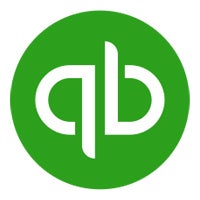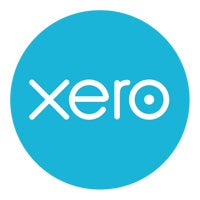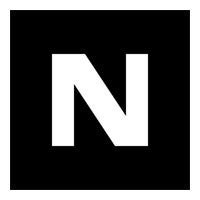Turning a profit seems simple in concept: Earn more than you spend. But as anyone who’s tried to make, follow or revise a budget can tell you, it’s a bit more complicated than that. So it’s good that, these days, we can do a lot better than a box full of receipts and a messy spreadsheet. With modern financial software, teams can finally vanquish even the biggest of accounting headaches.
However, getting from stressful to stress-free requires the answers to two questions: What tools should we use, and how do we leverage them best?
That’s where this list comes in. The seven budgeting tools below represent some of the best this corner of the SaaS market has to offer. And while it’s not comprehensive, this list should give you some starting points for your own search and help highlight some of the most important aspects to consider.
Top accounting software comparison
In an effort to keep this lengthy post from stretching into a very dry novella, we’ve narrowed our criteria a bit, sidelining accounting and financial considerations like payroll, payment processing, tax reporting, etc. Instead, the tools listed below are primarily designed to aid in collecting, organizing, managing and analyzing information related to cash flow, so you can make effective decisions more easily.
QuickBooks Online: Best overall

Our first entry in this list needs almost no introduction, but for the sake of thoroughness, we’ll scribble one here anyway. QuickBooks, part of the Intuit family of financial apps, is used by numerous businesses across pretty much every industry and vertical. As one of the original digital accounting tools, it’s capable of quite a bit and integrates with almost everything.
While QuickBooks isn’t always the best tool for the job, especially in certain niche cases where generalized accounting software can’t fully support the needs of the organization, it boasts a feature set deep and broad enough to contend with specialized solutions anyway.
Pricing
- Simple Start: $30 per month.
- Essentials: $60 per month.
- Plus: $90 per month.
- Advanced: $200 per month.
Features
- Management functions for income, expenses, invoices and payments, mileage tracking, contractors and more.
- Fully integrated with all Intuit products (like TurboTax).
- Allows users to bank with Intuit at 5.00% APY.
Pros
- One of the most comprehensive financial tools on the market.
- Optional add-ons to increase functionality, including payroll.
- Offers access to expert help from seasoned accountants and finance pros.
Cons
- Limited functionality on cheaper plans
- Features not as specialized for use cases or industries as some apps.
- Integrations prioritize Intuit products and add-ons.
For more information, read the full QuickBooks review.
Xero: Most user-friendly budgeting

Offering many of the core features of bigger brand solutions, Xero positions itself as a tool geared primarily toward smaller businesses. With an intuitive interface, easy-to-master functionality and more affordable plans, it’s easy to see what makes Xero a good fit for that very use case.
For up-and-coming teams (even teams of one), Xero can simplify tracking bills, expenses, invoices, contractor fees and more. Higher-tier users can tap into advanced features like project tracking, analytics, multiple currency support and more. And with add-on integration with Gusto payroll, you can even take care of your W-2 staff.
Pricing
- Early: $15 per month.
- Growing: $42 per month.
- Established: $78 per month.
Features
- Hubdoc allows professionals to automatically capture bill and expense data, so you can stop carting around all those receipts.
- Paperless records and native reporting tools make it easier to track cash flow, analyze trends and chart the course for your finances.
- Xero offers a broader range of integration options, simplifying the process of fitting it into your current workflows.
Pros
- Robust budgeting and accounting functionality at an affordable price.
- Largely platform-agnostic with third-party integrations.
- Built-in banking connections, payment processing and bill pay keep all the important data in a single place.
- More user-friendly for non-accountants than most.
Cons
- Most advanced features are restricted to higher-cost plans.
- No option for additional licenses, i.e., there’s only one user account.
For more information, read the full Xero review.
NetSuite: Best ERP

Another tech industry juggernaut, NetSuite by Oracle, is more than just an accounting app. Similar to the wide-reaching offerings of Zoho, NetSuite offers solutions to a plethora of business needs, from enterprise resource planning (ERP) to field service management to data management and security.
Most relevant to this discussion is the ERP. NetSuite can turn mountains of illegible data into critical business insights, potentially making the difference between financial growth and catastrophe. It’s a more involved solution and better suited to larger organizations, but for teams with room in the budget and the data needs to justify it, it’s hard to beat.
Pricing
- Contact NetSuite for a quote.
Features
- NetSuite’s ERP is built to facilitate management of global businesses and large-scale supply chains.
- The software is end-to-end, able to manage orders, inventory, supply chains, warehousing, procurement and finances.
- With proper implementation, NetSuite can facilitate advanced reporting and analytics, leading to the insights needed to achieve impressive optimizations.
Pros
- Uniquely suited to meet both the ERP and IT needs of a global organization.
- Accounting and budgeting go hand-in-hand with first-class data management.
- Manage every aspect of resources and logistics from beginning to end.
- Extensive add-ons and products, covering a wide range of verticals.
Cons
- No publicly listed pricing on their website.
- Less effective at meeting the needs of smaller organizations.
For more information, read the full Netsuite review.
Spendesk: Best expense management

Spendesk is a slightly different solution, offering a very particular functionality. The platform, along with its companion app and other features, is built to simplify and streamline the process of spending and expensing for business teams. Manually handling expenses, reimbursements, approvals and related tasks can be a nightmare for accountants.
With Spendesk, it doesn’t have to be. Spendesk allows managers to more effectively control spend — from how much is spent to how the money is used and beyond. It provides powerful automation to minimize labor and potential errors, and it can turn expense tracking into real-time monitoring.
Pricing
- Contact Spendesk for a quote.
Features
- Control expenses, invoices and company-issued spend cards from a single platform.
- Exercise tighter control on approvals, budgets, reports and more, and get full, real-time visibility.
- Turn month-end expense reporting into an automated, hassle-free process.
Pros
- Specialized to solve pain points related to expense management.
- Easily integrates into other tools and solutions to aid in facilitating automations.
- Can even issue physical credit cards for use by company staff.
Cons
- Limited pricing transparency.
- Minimal functionality outside the central use case.
Workday Adaptive Planning: Best cash forecasting

Workday bridges the gap between Spendesk’s laser-focused expense solution and the more broadly designed tools in this list. The reason for this is simple: by improving the accuracy of expense data and the speed at which it can be reported, teams can more effectively plan and budget in advance.
There’s more to it than that, though. Workday products cover quite a bit, including HR and industry-specific use cases like healthcare supply chain management. But the advantage is still the same. It’s strategic analytics, turning accurate and up-to-date reporting into accurate forecasting.
Pricing
- Contact Workday for a quote.
Features
- Solutions cover everything from financial planning to workforce planning to operational planning.
- Faster, more accurate spend, payroll and financial data reporting helps achieve more effective financial planning.
- Optional products include local and global payroll, talent management and employee experience.
Pros
- Workday offers much of the same experience that NetSuite does, but it’s also geared toward midsize businesses.
- Workday has specialized functionality to meet the needs of several complicated industries, including healthcare, life sciences, public services, hospitality, professional services and more.
- Mobile app functionality makes it easy for every member of the team to use, and unlimited user licenses make it less expensive for them to do so.
Cons
- Minimal pricing transparency.
- Some businesses with less complicated needs may find that more generalized software can serve them well at a lower cost.
For more information, read the full Workday review.
Cube: Best for stakeholder collaboration

Last on our list is Cube. The other entries all had one or more accounting functions that could be handled natively on the platform. Cube, on the other hand, doesn’t handle those things internally. Instead, it aggregates information from other apps, platforms and sources.
The reason for this is visibility. Cube serves as a single source of truth, leading to easier reporting, streamlined collaboration and less frustrating implementation.
Pricing
- Cube Go: Starting at $1,500 per month.
- Cube Pro: Starting at $2,800 per month.
- Enterprise: Pricing by custom quote.
Features
- Automation and integration with ERP tools, spreadsheets and much more.
- Dedicated customer success manager to help achieve financial goals.
- Advanced financial planning and analysis (FP&A), with visualization and reporting all in a single tool.
Pros
- Achieve easier, more effective collaboration with less manual work.
- Simplify reporting and increase transparency without increasing workload.
- Boost data accuracy and maximize recency of information.
Cons
- Highest listed starting costs.
- Limited functionality outside the core use case.
Key features of accounting software
Now that we’ve covered the list, let’s drill down on some of the important features that frequently play a deciding role in the buying process for tools like these.
Financial planning and forecasting
Not every financial tool is designed to help you crunch the numbers and harvest insights natively. Some are just tactical in their functions: payments, payroll, general ledgers, etc. As the focus of this article is budgeting specifically, it makes the most sense that you’re on the hunt for something that helps you make future budgets more accurate and effective, so tools that omit this might be niche cases only.
Expense management
One of the biggest wrenches in the works when it comes to financial planning is expenses. It’s often difficult to determine just how much money is available when a significant number of purchases and transactions have to be reconciled at the end of the month or accounting period. Advanced expense management tools aim to alleviate some of this pressure by reducing the time spent reporting; in some cases, making expense data available in real time.
AP/AR and native payment processing
Having a single solution that can handle all incoming and outgoing transactions can do quite a bit to relieve the workload of overburdened accounting pros on the team. Better still, if those functions can be automated where appropriate.
Payroll
Hey, everyone on the team is looking to get paid, right? Every organization has to handle this somehow, and integration or native functionality reduces tech stack bloat and minimizes the number of dashboards that have to be juggled.
How do I choose the best accounting software for my business?
Two major considerations stand out for a decision like this: What are your needs, and how much time and budget can you contribute to a service switch? For some, the top priority is getting a larger list of features and tools, even if it costs more in setup and migration. For others, they need a simple solution that will just drop right into their current workflow.
After all, this is the budget we’re talking about. The less time those functions and that data are in flux, the better.
Methodology
While writing this article, we researched the vendors and their websites, as well as customer reviews and ratings, to gain a full understanding of where each solution fits into the market landscape — and who they serve most effectively.

